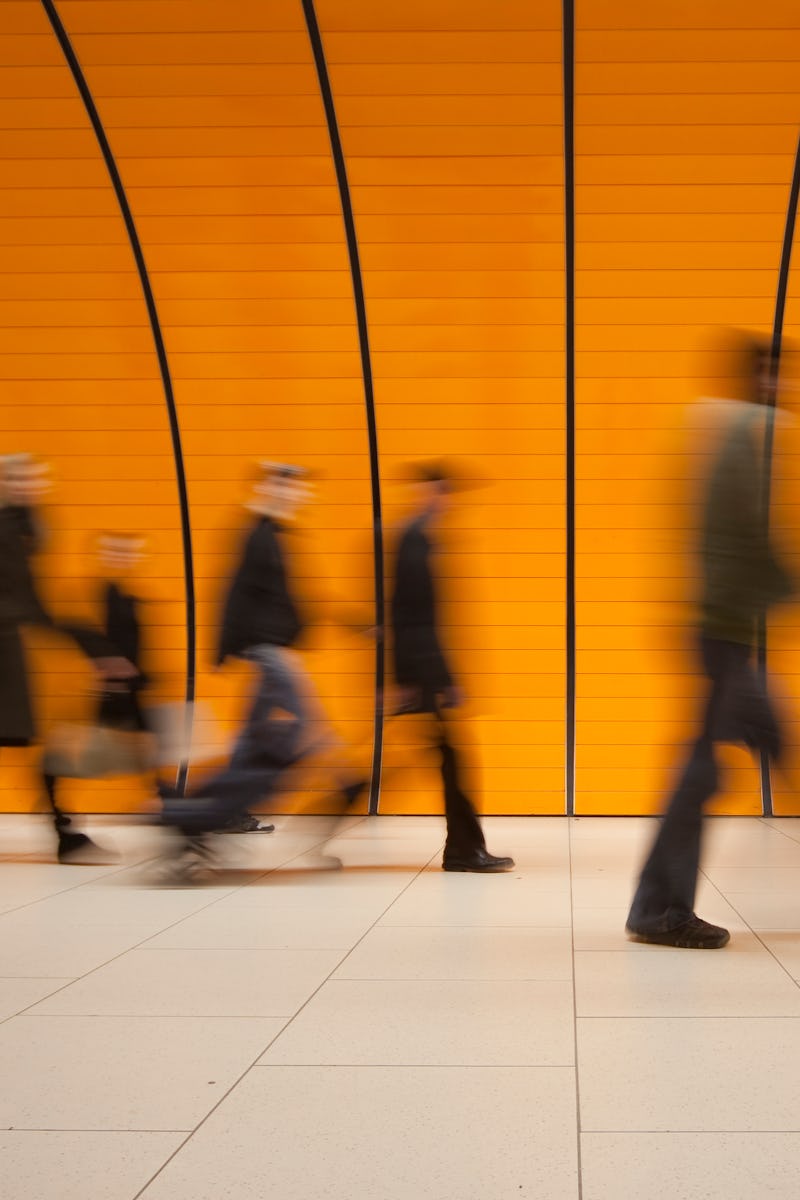"You should wear a facemask even if you cannot see people around."
One type of indoor area is especially high-risk for Covid-19 — study
New fluid dynamics research suggests the six-feet-apart rule should be adjusted hyper-locally, depending on the shape of the space.
by Alexandra PattilloLife often pushes people close together. But during a pandemic, social distancing can be a lifesaving tactic.
A now-infamous rule is the need to stay at least six-feet-apart from others — a CDC recommendation based on the idea most large droplets expelled by a cough or sneeze fall within six feet.
A new study suggests it may be vital to adjust that six-foot rule hyper-locally, depending on the shape of a space. Data indicates the six-feet-apart rule isn't far enough in a narrow, enclosed hallway.
The findings suggest places like narrow school hallways, enclosed airport boarding zones, and office corridors pose a higher risk when it comes to transmission.
Using computational simulations modeling airflow and viral droplet dispersion, the study team found moving people leave behind a floating bubble of virus-laden droplets or a trailing, virus-containing cloud.
In a narrow corridor, this cloud becomes concentrated — posing more danger to those coming behind than it otherwise would in a larger, open air space.
Study co-author Xiaolei Yang is a researcher at the Institute of Mechanics at the Chinese Academy of Sciences. The transmission of Covid-19 is "highly influenced" by airflow, Yang tells Inverse:
"A slight difference in the airflow can significantly alter the virus spreading pattern in the air," he explains.
In many cases, the common guideline of "six-feet apart" may not be enough when the influence of airflow is taking into account, Yang adds. In turn, he notes, "you should wear a facemask even if you cannot see people around."
These findings, which could change the way you move through the world, were published Tuesday in the journal Physics of Fluids.
Can you be infected with Covid-19 if you are more than 6 feet away?
To answer this question, Yang and his team analyzed the dispersion of cough-generated droplets in the wake of a walking person moving through different space sizes. They used computational numerical models to construct a human-like digital mannequin, and incorporated factors like airflow patterns, walking speed, surrounding architecture, and droplet concentration and velocity. They did not account for air temperature, humidity, or the evaporation speed of droplets.
The discovered that, if a person walking in a corridor coughs, their breath expels droplets that travel around and behind their body — much like the watery wake that trails behind a boat.
The model revealed individuals inadvertently create a "re-circulation bubble" directly behind their torso as they walk. This long wake, in turn, streams behind them at approximately waist height. This height suggests children may be at a higher risk of exposure than previously realized because the cloud hits them at mouth-level.
When researchers looked closer, they found there were two specific dispersal patterns present:
- A floating bubble
- A trailing cloud
In the first pattern, the cloud of droplets detaches from the moving person and floats far behind that individual, creating a floating bubble of virus-laden droplets. This all happens within five seconds after a cough. This finding suggests a person may inhale viral droplets even if the infected person is relatively far in front of him or her.
The cough-generated droplets from a walking individual disperse differently in a narrow corridor and an open space. In an open space, the droplets are dispersed in a large range attached to the person; in narrow corridors, the droplets are concentrated in a small bubble and are left further behind.
In this scenario, droplet concentration is much higher compared to the "trailing cloud" scenario. This is when the cloud is attached to the person's back, trailing behind them like a tail as they move through space. This cloud wouldn't be left as far behind as the detached scenario in a narrow, closed space.
Why this matters — The exact way airflow influences Covid-19 spread remains poorly understood, Yang says. We still don't know how long or how much exposure someone would need inside near an infected person to catch the virus.
This study is a step toward filling in that gap, but it's still too early to formally tweak the six-feet-apart rule based on this data. For now, the study suggests people take special care and wear a mask if they need to pass through a narrow enclosed space with strangers. And if there's room to create further space between you and another, you should take it.
For Yang, these findings have already changed the way he operates during the pandemic:
"I wear a mask for indoor activities and pay more attention to my kids when they are with me."
Abstract: The dispersion of viral droplets plays a key role in the transmission of COVID-19. In this work, we analyze the dispersion of cough-generated droplets in the wake of a walking person for different space sizes. The air flow is simulated by solving the Reynolds- Averaged Navier-Stokes equations, and the droplets are modelled as passive Lagrangian particles. Simulation results show that the cloud of droplets locates around and below the waist height of the manikin after two seconds from coughing, which indicates that kids walking behind an infectious patient are exposed to higher transmission risk than adults. More importantly, two distinct droplet dispersion modes occupying significantly different contamination regions are discovered. A slight change of space size is found being able to trigger the transition of dispersion modes even though the flow patterns are still similar. This shows the importance of accurately simulating the air flow in predicting the dispersion of viral droplets and implies the necessity to set different safe-distancing guidelines for different environments.
This article was originally published on
